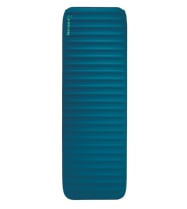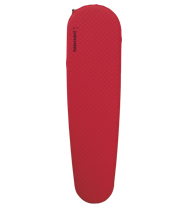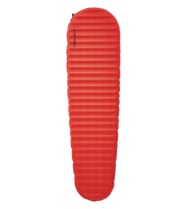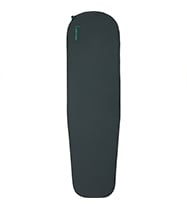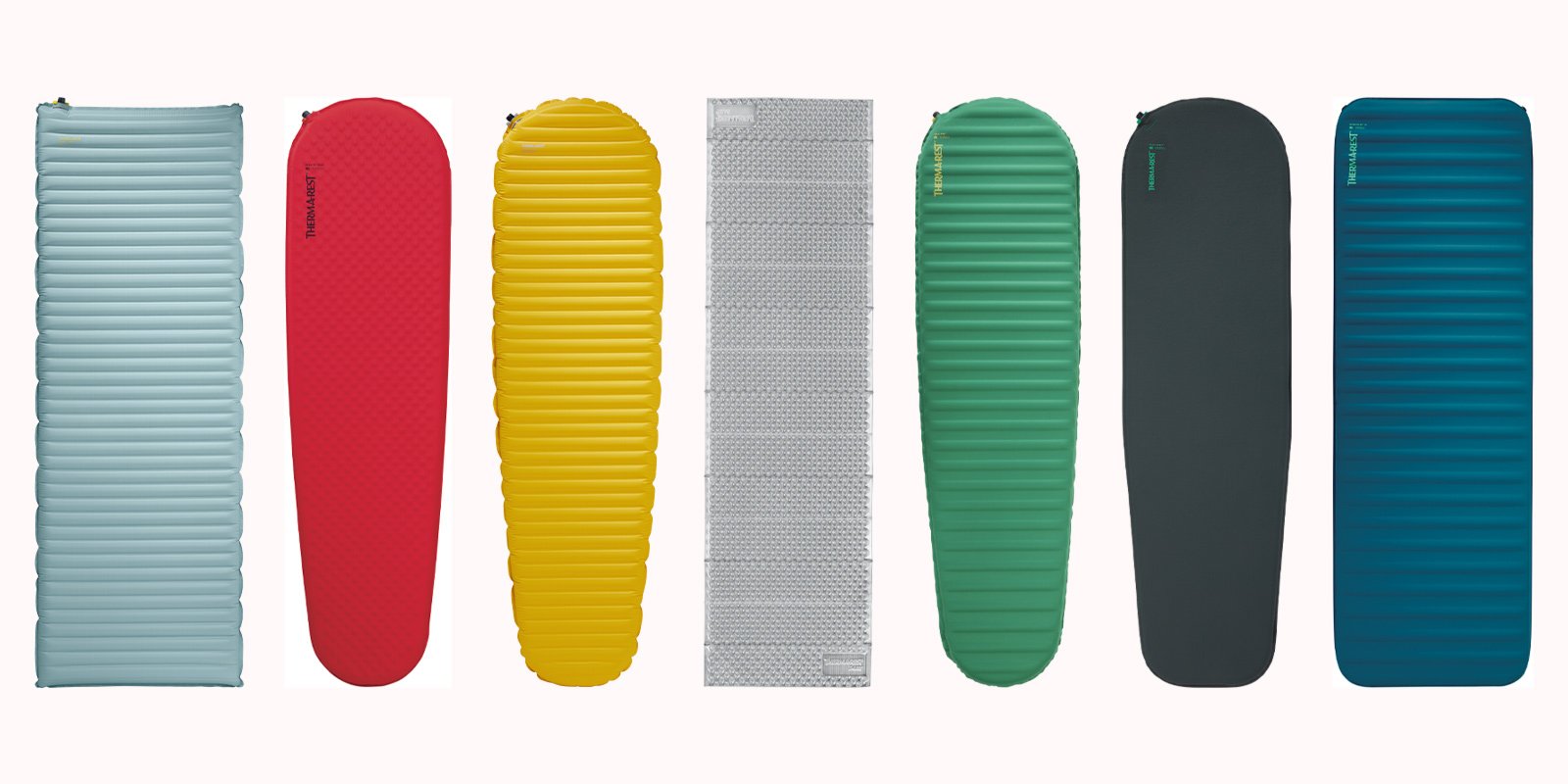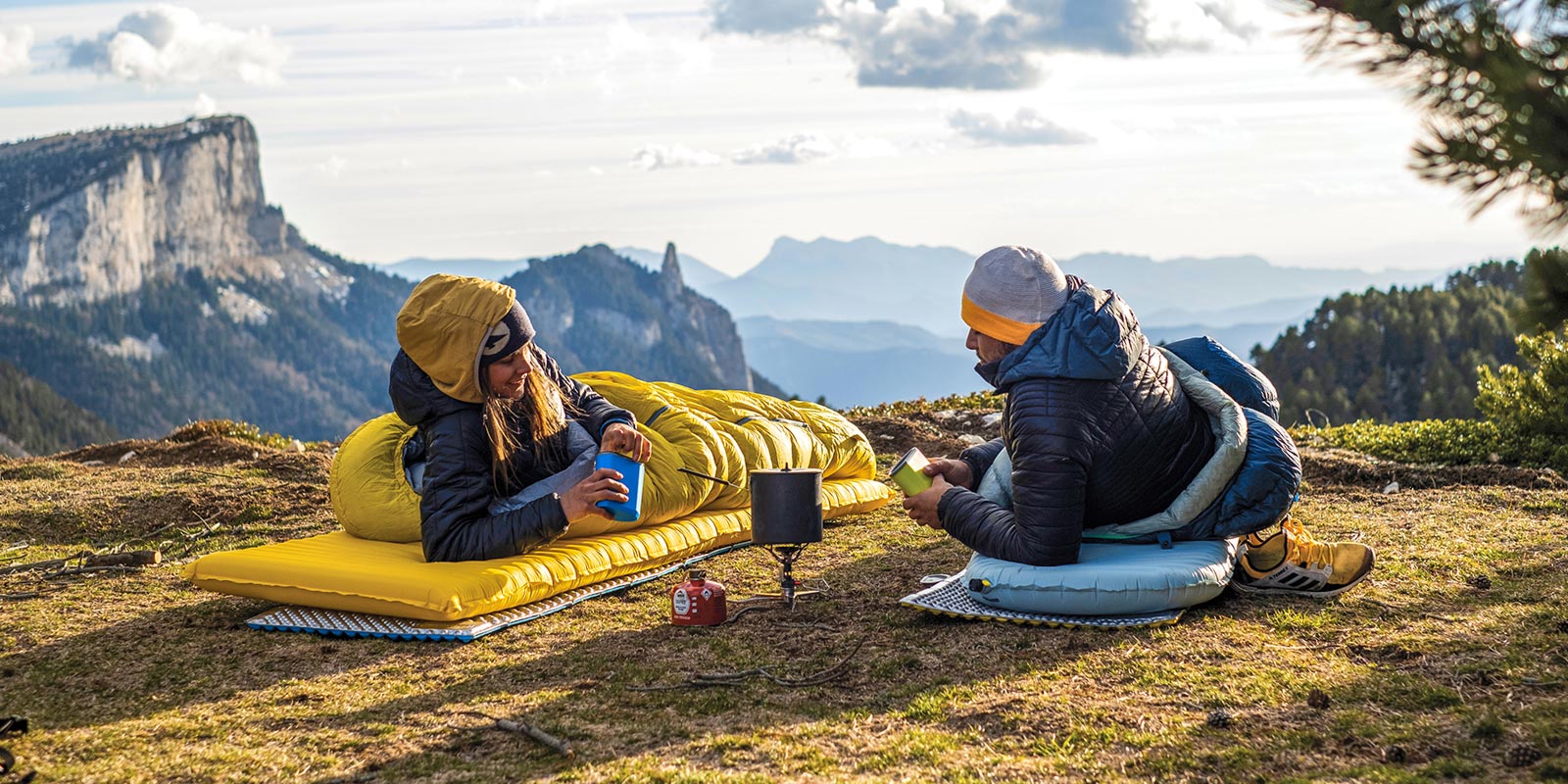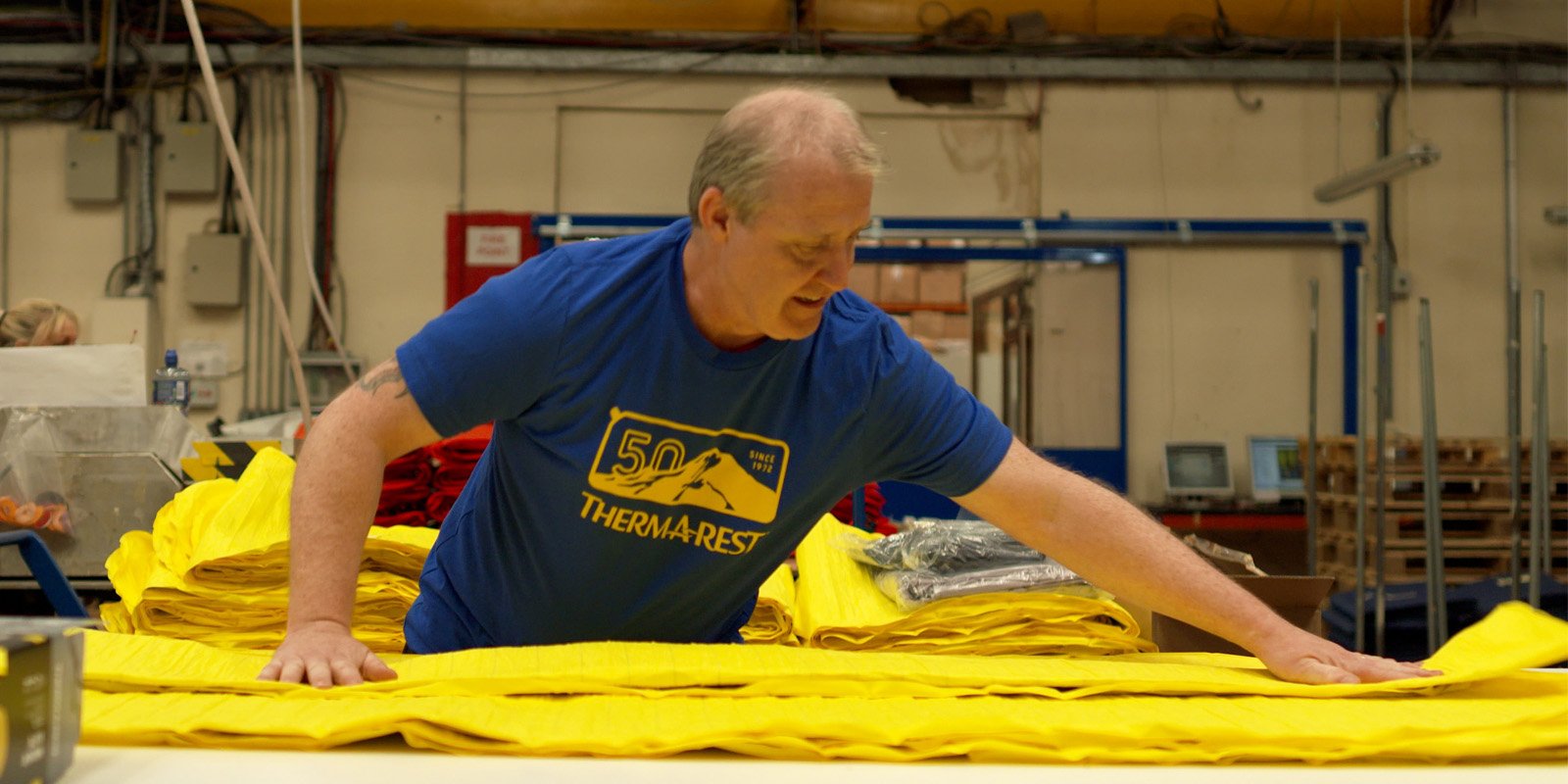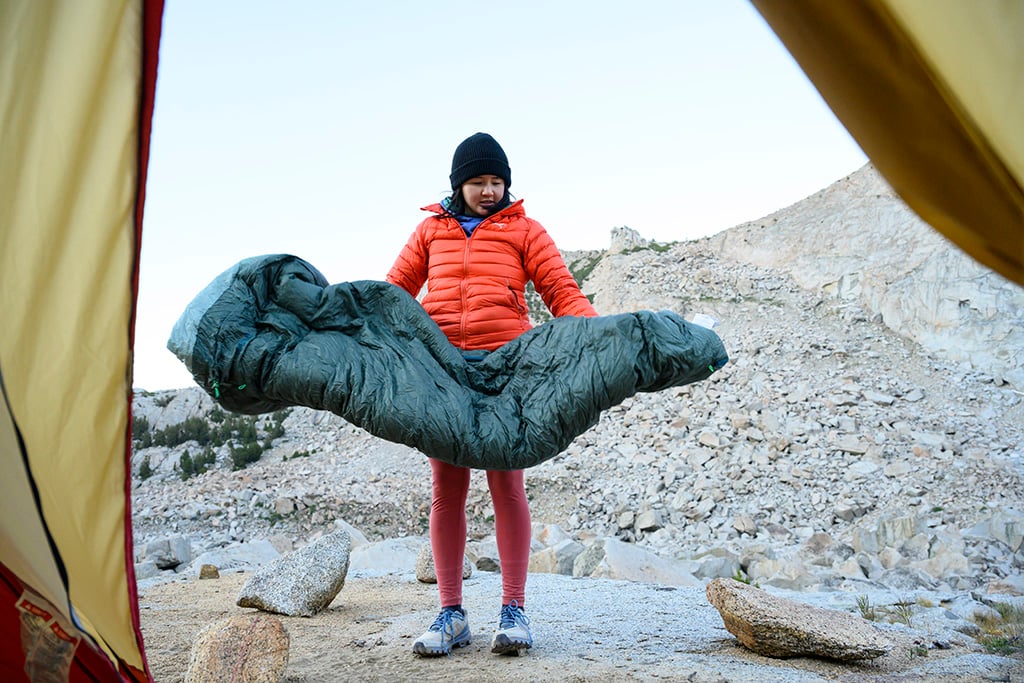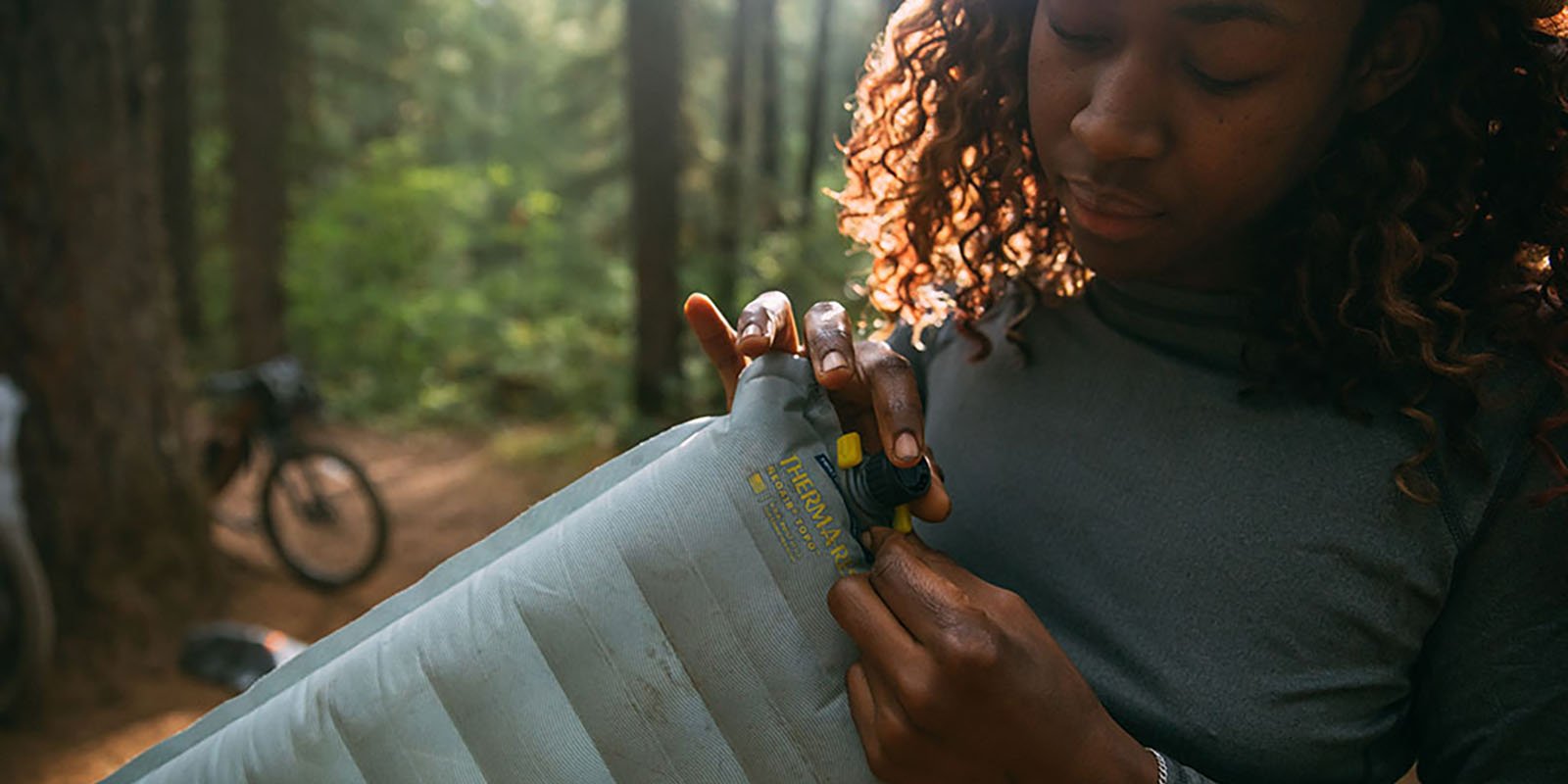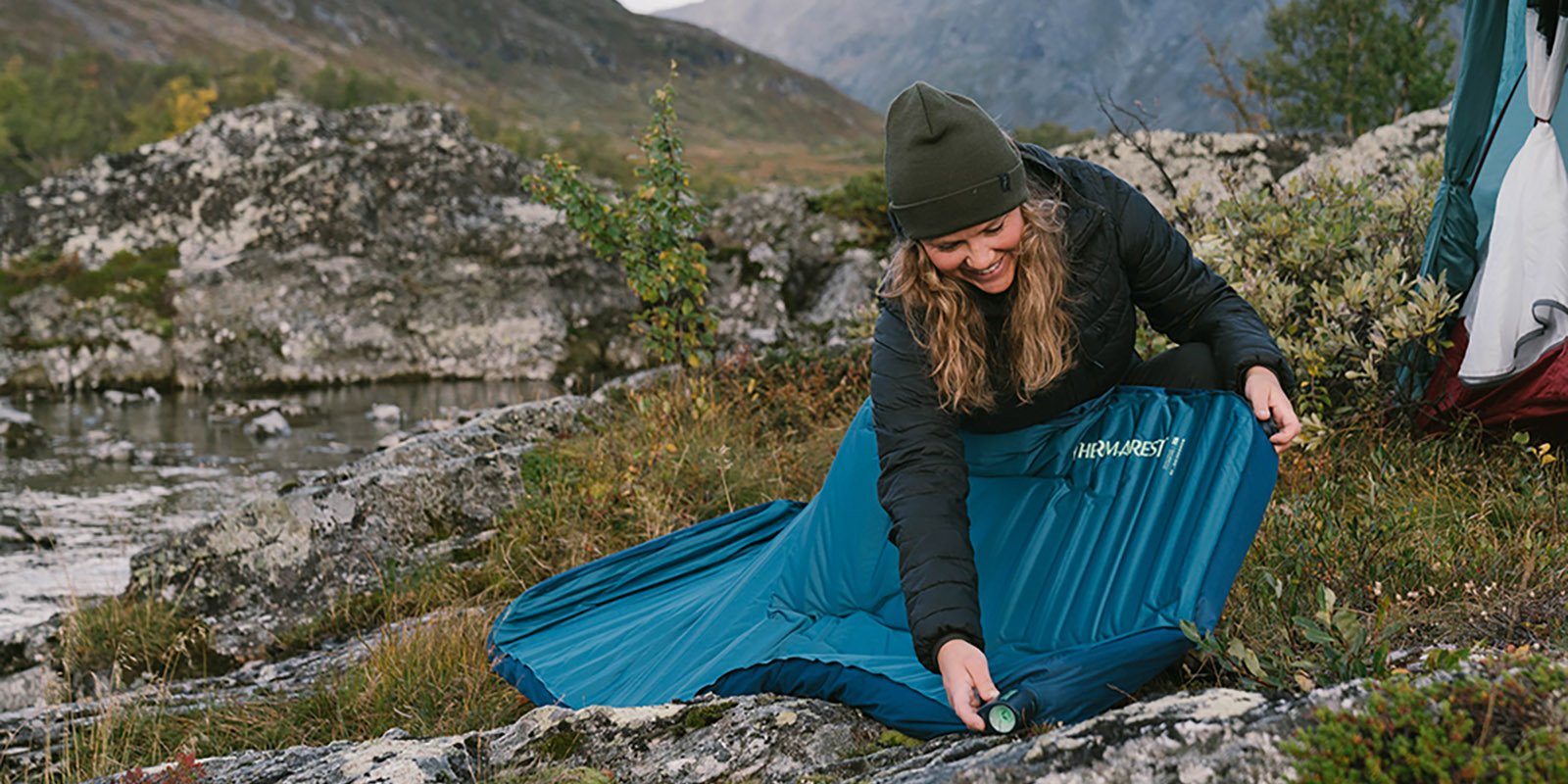In the first half of the 1970’s Therm-a-Rest revolutionized outdoor adventure by introducing the self-inflating sleeping pad to the market; until then, the high-performance options were rudimentary closed cell foam sleeping pads. The self-inflating sleeping pad was a big deal, so much so that Therm-a-Rest eventually became synonymous with sleeping pad like Kleenex is synonymous with facial tissue.
These days, air pads may steal much of the spotlight as the new cutting-edge technology, but self-inflating pads are still a big part of our product line, with good reason. Given its heritage and popularity, we decided to answer some common questions about the technology that made us who we are today.

How Do Self-Inflating Sleeping Pads Work?
Self-inflation is accomplished as a result of the properties of open cell foam and our ability to seal the foam in fabric with a regulated pathway for air to enter. Realizing this three-part system—open-cell foam + fabric seal + valve—was the birth of Therm-a-Rest and the self-inflating sleeping pad.
The story goes that one day while tending to his garden, founder Jim Lea was resting his knees on an open-cell foam ground cushion. Hearing air escape from the cushion when he kneeled on it triggered that breakthrough idea: if he could seal the foam in fabric and use a valve to regulate the air flow in and out, he could build a vastly more comfortable sleeping pad. He rigged up a sandwich press and started prototyping.
What is Open-Cell Foam?
Open-cell foam is a broad term to describe foams with open cell walls. Foams come in many varieties with many properties, but we use flexible polyurethane foams for our self-inflating sleeping pads (as opposed to rigid polyurethane foams). These foams are made by reacting specific varieties of diisocyanates and polyols. (Reacting a polyol with a diiocyanate is the general way of making polyurethanes, which exist in a variety of forms other than foams, such as coatings, sealants, and adhesives.)
With the exception of microcellular class foams, polyurethane flexible foams are open-cell foams. During the foaming reaction, gas is released within the material creating empty spaces, or open cells. The aim is to formulate a cell structure that allows balance between air pressure inside and outside the cells. Flexible polyurethane foams can be made to be light, durable, supportive and comfortable, giving them remarkable versatility.
Outside of outdoor sleeping pads, flexible polyurethane foams are widely used in such applications as furniture, automobiles, packaging and bedding. In fact, they make up about 30% of the North American polyurethane market.
Why Does Open-Cell Foam Self-Inflate?
With open cell walls, air can pass in and out of each cell. When you compress the foam, the air is forced out. When the force of compression is lifted, each cell acts like a vacuum and atmospheric pressure pushes air into the empty spaces. Despite the name of the household appliance, a vacuum—in this sense—doesn’t “suck” air in, rather a vacuum is an empty space that is filled. Here are the MythBusters with a fun demonstration of a vacuum.
This vacuum process is what we refer to when we say self-inflating. The valve in your sleeping pad creates the lone pathway for air to enter or escape, giving you control over the vacuum process.
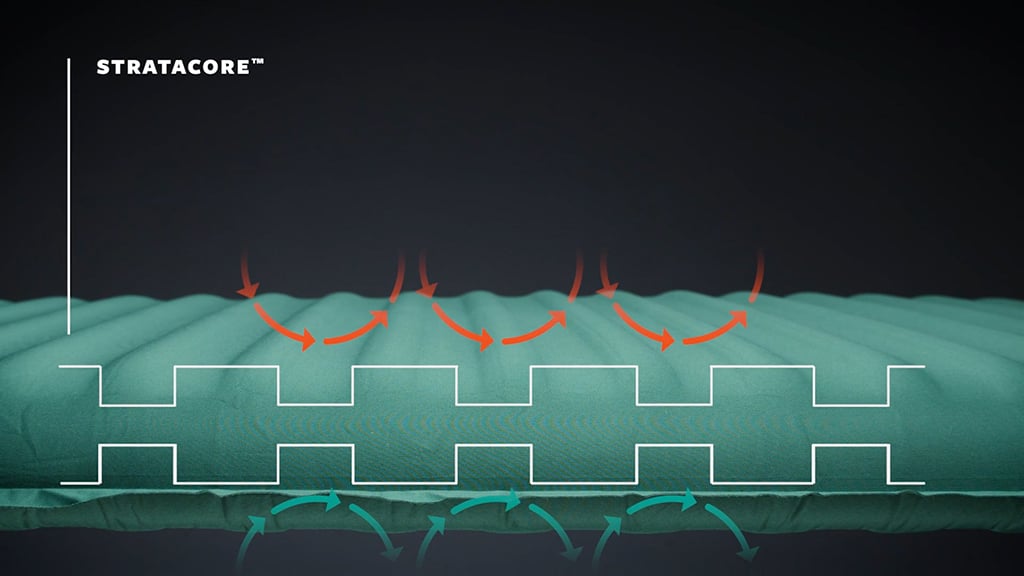
How Long Should it Take for My Pad to Self-Inflate?
Unfortunately, the answer to this question is a classic “it depends”. Generally, it takes 5-15 minutes for any of our self-inflating pads to inflate under their own volition. That 10-minute range variance is probably due to one of the following factors: core construction, trained compression, elevation and temperature.
Core Construction
Our foam cores are not all the same, and we use different construction types depending on the pad. For example, while we use StrataCore construction in pads like the ProLite™ Apex™ and TrailPro™, we use Diagonally Die-Cut Foam cores in the classic ProLite™ Sleeping Pad. The differences in cut design result in disparities in overall foam volume, which leads to slight disparities in time it takes to self-inflate.
Foam volume really is the key factor in self-inflation times. The 4-inch thick MondoKing™ features StrataCore construction like the ProLite Apex, except the ProLite Apex is 2 inches thick. Naturally, the Mondo takes longer to self-inflate.
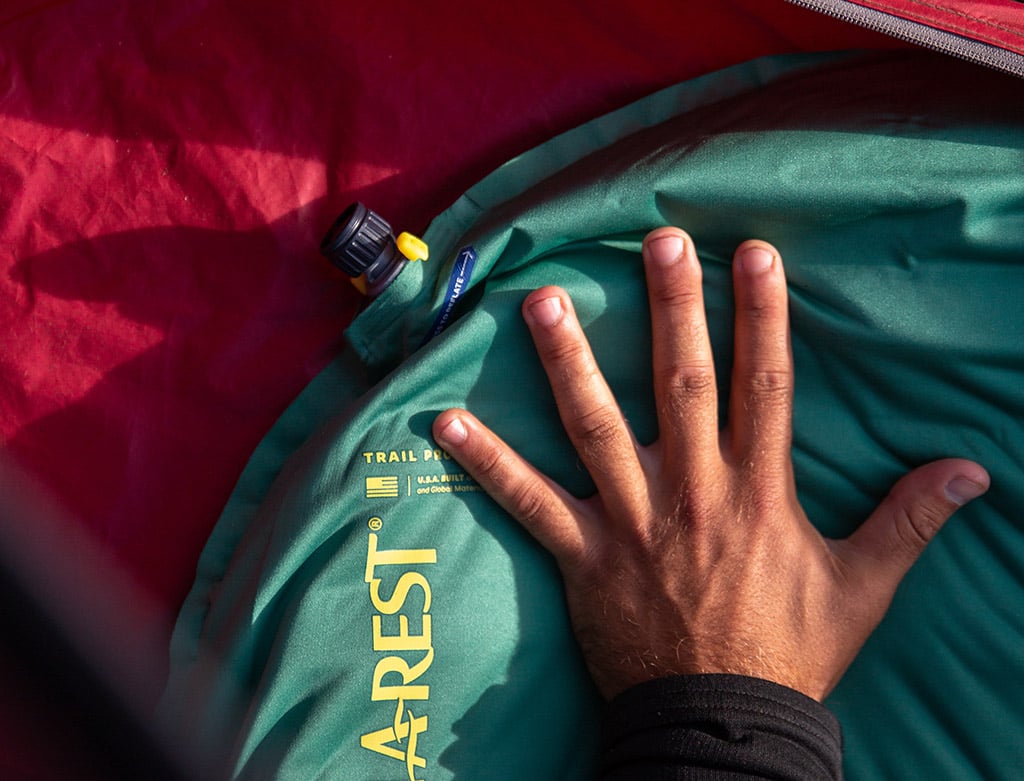
Trained Compression
Self-inflation times also depend on the state of your pad’s foam core. A pad that has been rolled tight and stored that way for several months is going to take longer to self-inflate than a pad that has only been rolled for a day in between campsites. Open-cell foam has a memory (not to be confused with memory foam, which is a specific formulation of open-cell foam) and can be trained to remain more compressed if held that way for long periods of time.
This is why a brand new, out-of-the-box self-inflating sleeping pad can be rather anemic when initially unrolled, laid out, and the valve opened. Fresh off the manufacturing lines, the pads are compressed and rolled with machines that will achieve the tightest compression a pad will ever experience. The open cells in the foam simply aren’t used to expanding and allowing in air.
To overcome the lethargic self-inflation of long-compressed foam, it’s helpful to prime the pad with a few breaths of air; it’s like giving a push-start to get the momentum going. The open cells will become more pliable to the atmospheric pressure and self-inflate as designed.
Elevation
The elevation at which you are camping will affect how long it takes for the pad to self-inflate. At higher elevations the atmospheric pressure is lower, meaning there is less “force” pushing air into the empty cells of your pad’s foam core. We haven’t tested the disparity of inflation times at different elevations, but fundamental physics tells us that there is at least a slight time difference between high and low elevation self-inflation times.
Temperatures
Temperatures affect the inflation times due to how heat—and the absence of it—affects the properties of the polyurethane. Colder temperatures make the material less pliable, meaning the atmospheric pressure has to work harder to fill the empty spaces in the foam, causing a cold pad to take longer to self-inflate.
Why Would I Wait for Self-Inflation When I Could Do it Faster Myself?
Depending on your camp routine, the 5-15 minutes it takes to self-inflate doesn’t have to be waiting time. While your pad inflates you can filter some water, start boiling water for a meal, or perform any manner of camp tasks.
Ironically, (though not really because physics can’t really be ironic) at higher elevations your pad will self-inflate slower and your water will boil faster. If this is the case and you’re searching for things to do instead of watching your pad, make sure you’ve taken your sleeping bag or quilt out and let it sit. This allows the insulation to loft and maximize the number of heat-trapping air pockets available for overnight warmth.
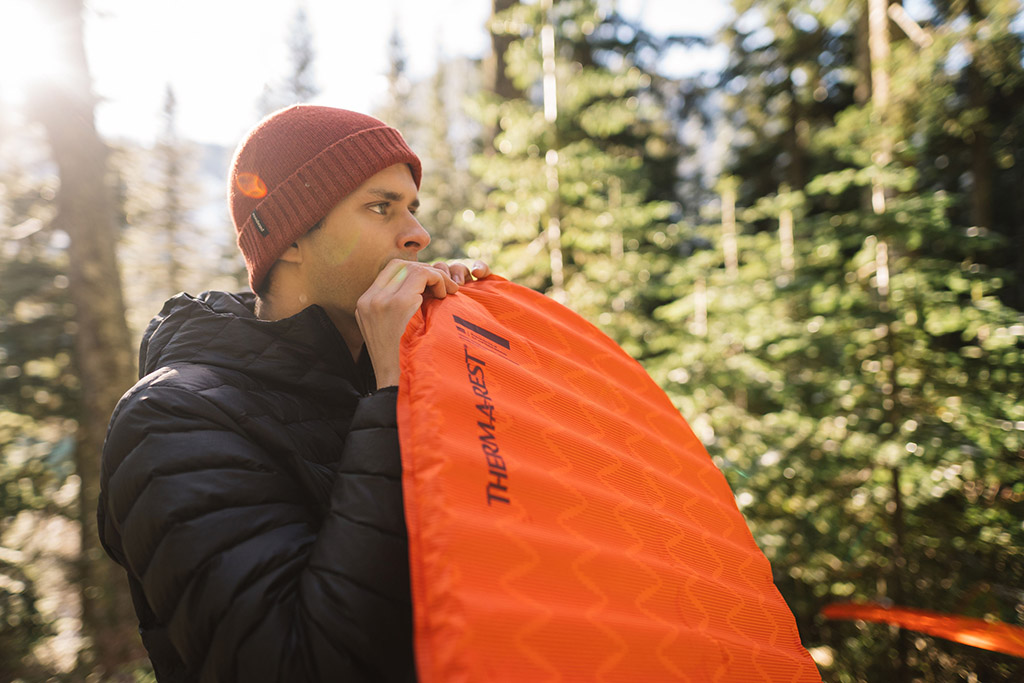
Why Doesn’t My Self-Inflating Pad Inflate All the Way?
Self-inflation begins when the valve is opened and ends when equilibrium is reached between the atmospheric pressure outside the cells and the air pressure within the cells pushing the other way. In our experience, most users’ comfort level requires more air than the equilibrium level, which is why self-inflating pads don’t inflate “all the way.”
Self-inflating sleeping pads have never been intended to self-inflate all the way. Some individuals prefer a softer pad that contours to their body more, while others need the rigid support of a firmly inflated pad. Leaving room for manual input of air—whether that comes from your lungs, a pump sack or a battery-powered pump—allows a pad to be customizable.
Self-inflation is about getting you most of the way there, so it’s a breeze to top off a pad to your desired comfort level. This is one of the great advantages of self-inflating sleeping pads: they are vastly easier to inflate than air pads.
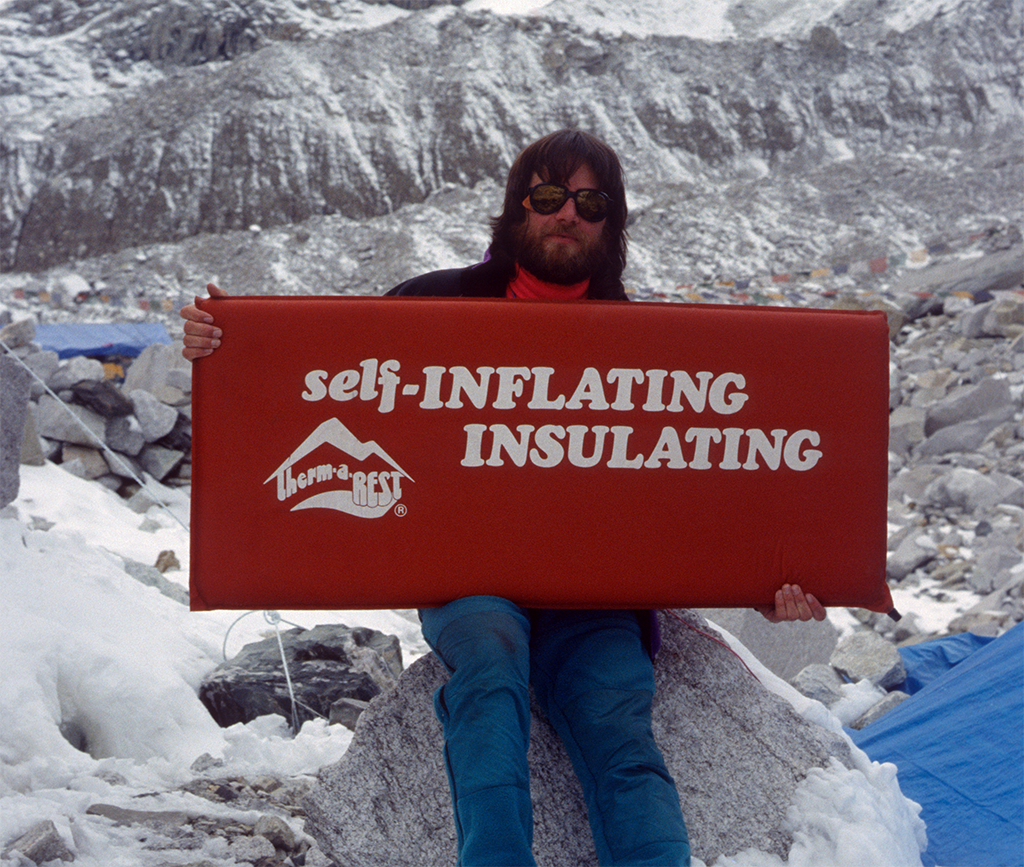
The History Behind the Self-Inflating Sleeping Pad
In terms of outdoor recreation, the 70s and 80s were characterized by a remarkable proliferation of participation, intensity of pursuit, and scale of achievement. Technological advancement and cultural factors combined to push more coming-of-age baby boomers deeper into the backcountry than any previous generation. Historical accounts tell us about their waking experiences, but because better sleep leads to better physical and mental performance, we know that their improved sleeping experiences played an essential role in defining contemporary notions and techniques of outdoor adventure.
The self-inflating pad is a timeless piece of equipment—as useful now as it was then. If you are reading this, there’s a good chance you own a self-inflating pad or at the very least are considering purchasing one. At Therm-a-Rest we believe in knowing your gear. Gear that you know is gear that you can trust when you are out there. We hope that this look at self-inflating technology answers your questions, enhances your knowledge, and deepens your relationship with your self-inflating sleeping pad.
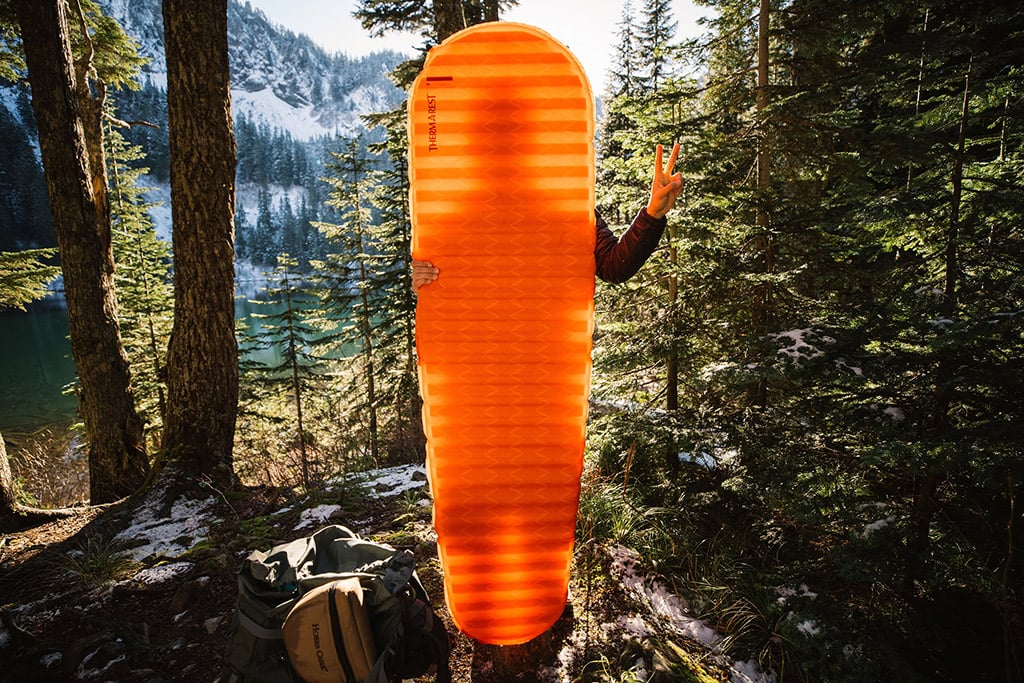
Why have a relationship with your pad? Because sleep is foundation for performance each and every day, and a pad you know and trust means better nights, and therefore days, outdoors.
Related Posts:

